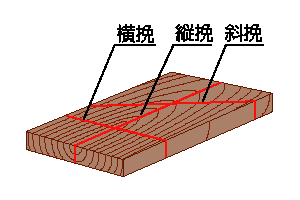
This article will teach you how to read a tape measurement for inches or millimeters. In this article, we'll discuss how to use the Metric version of a tap measure to obtain accurate measurements. Then, you'll be able to master the art of measuring any surface accurately. This article will help to get the perfect measurement, regardless of whether you are measuring the length of fence posts or the width doorways.
Metric tapes are millimeters
Metric tape measures can be divided into 10 millimeters. In inches, they are divided into quarters. Eights, sixteenths and eighths. Using a metric tape measure, however, will enable you to make more precise measurements. While there is a lot of confusion about how to read tape measures, it is generally easy to understand how they work. These are some tips to help guide you in reading a tape measure.

Inches are shown on Imperial tapes
The two ways that imperial tape measures display inches and cms is by using different formats. One type shows inches in very small increments, the other shows centimeters. In general, the smallest increment in an imperial tape measure is 1/16''. In metric, 10mm is the smallest increment. This makes the imperial scale more precise on paper, though most tape measures are marked in inches. Here are some ways you can tell which tape measurement to use when measuring something.
Metric tapes display fractions of an inch
The blade is marked with the equivalent fraction of an inch for metric tape measures. These tapes can be marked as small as one-quarter of an inch. By looking halfway between the 1/2" mark and the next one, you can measure any item that goes beyond those markings. The same process works for fractions up to a quarter-inch. To read a metric tape measure, lay it along the length you want to measure. For the best measurement, ensure that the tape measure is perfectly aligned.
Get precise measurements
Follow these steps to get exact measurements using a tape-measure: Always read the tape-measure markings from the top. This will eliminate any confusion between the two measurements. For example, if a shelf is one-inch in length, the tape measuring device will read one-inch. When the markings are not on the top, you must measure the length from the side. To do this, add 14 inch to your measurement.

Selecting a tape measurement
For many projects, the use of a tape measure can be crucial. But a tool is only as good and useful as its owner. You must learn how to use a tape measure correctly. The right tape measure can make all the difference in whether a project goes smoothly or fails. You should be aware of a few things when selecting a tape measure. Firstly, it's important to know how the measurement scale works. When stretched out, the blade on a tape measure appears to be a mess of confusing symbols.
FAQ
Are there any tips for starting a woodworking enterprise?
It can be difficult to start a woodworking shop. However, if you are passionate about your hobby you will be willing to put in the effort. You will probably love the challenge of starting your own business.
You should remember that unexpected issues may occur when you launch a new venture. You might run out money, or you may have to borrow unexpectedly. Maybe customers won't be willing to pay what you want. Preparedness is key to survival in such situations.
It is a good idea to create a separate bank account just for your company. You'll know exactly how much money is coming in by setting up a separate bank account.
How do I know what tools are best suited for me?
It's important to consider your preferences and needs when buying tools. Do you prefer metal or plastic handles? What size nails and screws do you usually use? Do you prefer hand tools over power tools?
How can my shop be organized?
Setting aside an area to store tools is the first step in keeping your workshop organized. To keep your tools sharp and ready for work, keep them clean of dust and debris. Use pegboard hooks to hang tools and accessories.
Where can you buy your woodworking materials?
There are many places that you can find all the information you need. You could go to your local hardware shop or visit websites such as Amazon.com.
You might also consider flea markets and garage sale for any old furniture or other materials you could reuse.
Statistics
- Overall employment of woodworkers is projected to grow 8 percent from 2020 to 2030, about as fast as the average for all occupations. (bls.gov)
- In 2014, there were just over 237,000 jobs for all woodworkers, with other wood product manufacturing employing 23 percent; wood kitchen cabinets and countertop manufacturing employing 21 percent. (theartcareerproject.com)
- If your lumber isn't as dry as you would like when you purchase it (over 22% in Glen Huey's opinion…probably over 10-15% in my opinion), then it's a good idea to let it acclimate to your workshop for a couple of weeks. (woodandshop.com)
- Average lumber prices rose about 600 percent between April 2020 and May 2021. (familyhandyman.com)
External Links
How To
How to stain wood
The process of staining wood involves the application of chemicals to the wood's surface, which causes it to change its color. This chemical reaction causes the wood color to change from white and brownish red. Oak is the most common wood type for staining. However, you can also use other wood types.
There are many methods to apply stain to wood surfaces. Some methods involve mixing the stain with a solvent (such as turpentine) and then brushing or spraying the mixture onto the wood. Another method involves applying a solution of water to the wood. You can mix stains into varnishes or paints to make them part of your finish coat.
The first step in staining wood is preparing the surface. You must clean the wood well to remove any grease or dirt that might interfere with the application of the stain. Sanding smoothens any scratches or rough spots. You must then decide on the type of stain that you wish to use. Penetrating stains are different from non-penetrating. Penetrating and non-penetrating wood stains penetrate deeper than other types, making them perfect for dark colors like mahogany. Non-penetrating stains work best with light colors like maple.
After choosing the type and application method you prefer, gather your tools. A paintbrush works well for applying stains because it allows you to spread the liquid evenly across the surface. A few rags are also handy to clean up any spillages after you have finished painting. If you intend to mix the stain yourself you will need enough containers to hold all the components.
After you have prepared your materials, clean the area you intend to stain. Clean the area with soap and warm water to get rid of dirt and grime. You can wipe down the entire furniture using a damp rag with clean water. Be sure to get rid of all loose material, especially if staining is planned for darker wood.
Next, apply the stain. Begin at one end and spray or brush the stain on the wood. Work slowly and carefully, moving back and forth along the grain of the wood until you reach the opposite end. You must be careful not to allow the stain to drip off the wood's edges. Let the stain dry completely before proceeding with the next steps.
Protect the painted surface with a coat polyurethane paint sealant. Apply three coats of polyurethane sealer. Allow the third coat to dry overnight before sanding the final coat.